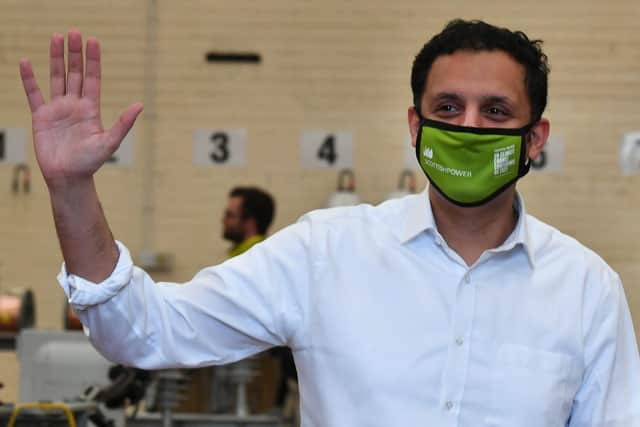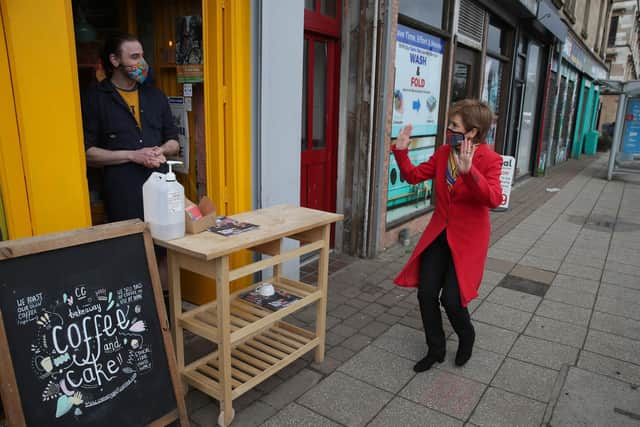Scottish Election 2021: Will Anas Sarwar help Labour take second place from the Conservatives in May? – Rachel Ormston


In our latest Ipsos Mori Scotland poll – conducted by telephone between March 30 and April 4 – the SNP remain way out ahead (with 53 per cent inclined to vote for them for their constituency and 38 per cent on their list vote), with the Conservatives in second place (20 and 21%) and Labour remaining behind in third (18 and 18 per cent), in spite of having picked up a few percentage points since February (plus three on the constituency vote and plus four on the list).
While support for the SNP has slipped back a little since autumn 2020, particularly on the list vote, overall the picture in terms of how the parties are faring has remained broadly similar across the polls for much of the last 12 months.
Advertisement
Hide AdAdvertisement
Hide AdVoting intention is – with good reason – usually the main focus of poll watchers. However, there are other clues to suggest that, beneath the surface, there may be considerably more movement in public views of Scotland’s political parties than first meets the eye.
This is particularly the case with respect to Scottish Labour
The relatively warm write-ups Anas Sarwar received for his performance in the first Scottish Leaders’ debate last week appear to be reflected in his public ratings: 46 per cent are satisfied and just 20 per cent dissatisfied with how he is doing his job as Scottish Labour leader.
This is a marked improvement on his predecessor, Richard Leonard, with whom just 18 per cent were satisfied in our October 2020 poll and as many as 44 per cent dissatisfied.


It is also better than Kezia Dugdale was polling just prior to the 2016 Holyrood election – our poll in April of that year found 33 per cent were satisfied and 44 per cent dissatisfied with her performance as Scottish Labour leader.
Meanwhile, in spite of the Conservatives’ second place spot, Douglas Ross is rated far less highly than Sarwar overall, with just 25 per cent satisfied and 48 per cent dissatisfied – well behind Ruth Davidson’s ratings of 47 per cent satisfied and 33 per cent dissatisfied at a similar point in the 2016 campaign.
As well as improved ratings of its leadership, the public are now significantly more inclined to trust Scottish Labour to deliver across key areas of policy.
In comparison with our November 2020 poll, trust in Labour to tackle inequality had increased 12 points, with 54 per cent trusting them “a great deal” or “quite a lot” on this issue, and trust to manage education and schools in Scotland is up 11 points (to 51 per cent).


Advertisement
Hide AdAdvertisement
Hide AdThe Scottish Conservatives, on the other hand, are less trusted overall than Scottish Labour across all the issues we asked about, with little change in their ratings since late 2020.
With big improvements in public assessments of both its leadership and its general trustworthiness, why then has Scottish Labour not seen equivalently large improvements in its share of intended votes? The answer, at least in part, lies in that central fault line in Scottish politics – attitudes to independence.
Among those who favour independence, almost all plan to vote for a pro-independence party. As many as 90 per cent of this group plan to vote SNP on their constituency vote, and two per cent for the Greens.
On the regional list, only five per cent of pro-independence voters have so far followed Alex Salmond’s call to lend their list vote to the Alba Party, but 66 per cent plan to vote SNP, and 18 per cent for the Greens.


This very close tie-up between voters’ positions on independence and those of the parties they plan to vote for has left Labour, the Conservatives and the Liberal Democrats in a position where they are largely competing for the votes of those who are inclined to vote No in any future referendum – a group that is now rather smaller in size than it was prior to the 2016 election.
And among this group, a higher percentage currently favour the Scottish Conservative Party over Sarwar’s Labour – by 45 to 33 per cent on the constituency vote and 46 to 29 per cent on the regional list.
Notably, the Scottish Conservatives are also more trusted than Scottish Labour to manage Scotland’s economy by those who favour staying in the Union – though this group are still more inclined to trust Labour over the Conservatives to tackle inequality and manage the NHS.
Sarwar is relatively popular across the political spectrum – his ‘net’ rating (the proportion satisfied minus the proportion dissatisfied) is positive both among those who support independence and those who oppose it.
Advertisement
Hide AdAdvertisement
Hide AdThis is not the case for Douglas Ross, whose rating is heavily negative among those who support independence. However, the fact that a sizeable number of those who support independence are also inclined to think Sarwar a fairly capable leader may be largely irrelevant if Labour’s opposition to independence means that they are very unlikely to consider voting for them.
And of course, this is all before you come to Nicola Sturgeon’s ratings. Public assessments of Sarwar may be relatively favourable compared with his predecessors and Conservative competitor, but Sturgeon still leaves them all behind, with 62 per cent satisfied and 33 per cent dissatisfied.
Sarwar’s approach in the leaders’ debate – of attempting to position himself as ‘above the fray’ of pro and anti-independence arguments and mud-slinging – was a clear attempt to navigate this rocky territory.
The question is whether he will be able to maintain this line and build on his positive initial ratings to edge up Labour’s share of the vote enough to re-establish them as the main opposition party at Holyrood on May 6.
Rachel Ormston is research director at Ipsos Mori Scotland
A message from the Editor:
Thank you for reading this article. We're more reliant on your support than ever as the shift in consumer habits brought about by coronavirus impacts our advertisers.
If you haven't already, please consider supporting our trusted, fact-checked journalism by taking out a digital subscription.
Comments
Want to join the conversation? Please or to comment on this article.